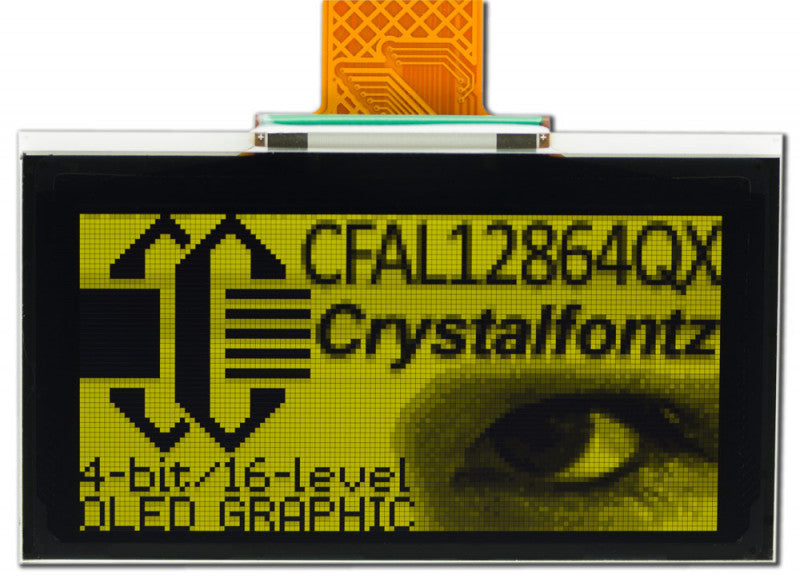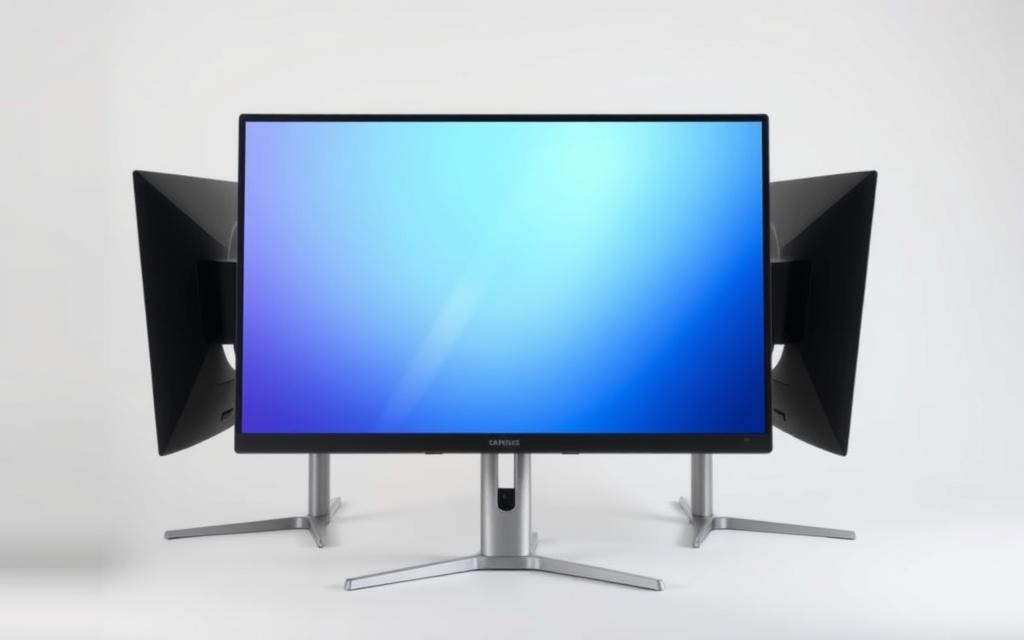This IPS Display Guide covers types (standard, Nano IPS), pros like 178-degree viewing angles and ΔE<2 color accuracy, and use cases: favored by designers for precise hues, photographers for true-to-life edits, and gamers for wide, vivid screens, balancing clarity with mid-range 1000:1 contrast.
IPS Panel Varieties
The most common subtypes include S-IPS (original Super IPS), Nano IPS (quantum-dot enhanced), AS-IPS (Advanced Super IPS), and H-IPS (High-Performance IPS). For example, S-IPS, launched in 2006, set the baseline with 178-degree viewing angles but averaged 92% DCI-P3 color; Nano IPS, introduced by LG in 2017, cranked color volume 40% higher via quantum dots, reaching 98% DCI-P3, while AS-IPS shaved response time to 4ms GTG from S-IPS’s 5-8ms, cutting ghosting in motion scenes.
IPS panels split into specialized variants, each prioritizing distinct specs. Here’s how they stack up:
-
S-IPS (Super IPS): The OG IPS design, debuting in 2006. Uses a traditional color filter array, keeping production costs low—entry-level S-IPS monitors still sell for 250. Its 178/178-degree viewing angles remain class-leading, but color gamut tops out at ~92% DCI-P3. Response time hovers at 5-8ms GTG, so fast gaming feels slightly blurred compared to newer types.
-
Nano IPS: These nanocrystals emit purer reds/greens when hit by blue light, expanding color volume by 40% vs. S-IPS. Most Nano IPS monitors hit 98% DCI-P3 or 135% sRGB. They’re pricier, though: mid-range models cost 500, and some high-end 4K versions breach $800.
-
AS-IPS (Advanced Super IPS): A 2020 refinement by AU Optronics. It reworks the liquid crystal alignment to reduce response time to 4ms GTG (some models hit 3.5ms), cutting motion blur significantly. Color accuracy stays sharp at ΔE<2, and it retains 95% DCI-P3 coverage. AS-IPS targets mid-tier gaming and content creation, priced between 450.
-
H-IPS (High-Performance IPS): By tweaking the polarizer layers, H-IPS lifts static contrast to 1000:1 (vs. S-IPS’s 800-900:1), making blacks look deeper in dark rooms. It’s less about color range (stays around 93% DCI-P3) and more about eye comfort for long document editing. Used in business monitors like Dell’s UltraSharp series, costing 700.
|
Panel Type |
Key Tech |
Avg. Color Gamut |
Response Time (GTG) |
Typical Price Range |
Best For |
|---|---|---|---|---|---|
|
S-IPS |
Traditional color filter |
~92% DCI-P3 |
5-8ms |
250 |
Office work, budget general use |
|
Nano IPS |
Quantum dot backlight |
98% DCI-P3 |
5-7ms |
800 |
Content creation, streaming |
|
AS-IPS |
Fast LC alignment |
~95% DCI-P3 |
3.5-4ms |
450 |
Mid-tier gaming, fast-motion tasks |
|
H-IPS |
Enhanced polarizers |
~93% DCI-P3 |
6-8ms |
700 |
Business use, eye comfort |
Viewing Angle & Color Perks
IPS displays own two game-changing perks: 178-degree viewing angles that keep colors consistent no matter who’s looking—and ΔE<2 color accuracy, the industry gold standard for matching real-world hues. Many IPS models also cover 95% DCI-P3 or more.
Compare that to TN panels, which lose 30% of color saturation at just 45 degrees off-center. Even VA panels, which match IPS’s 178-degree angles, trade wide-angle clarity for higher static contrast (1000:1 vs. IPS’s 800-900:1), making IPS the better pick for tasks where everyone in the room needs to see accurate colors.
Then there’s color accuracy: ΔE<2 isn’t a random number—it means the difference between what’s on your screen and a professionally printed photo is undetectable to 99% of people. Budget TN panels often score ΔE>5, leading to frustrating rework: Datacolor found photographers using TN monitors spent 25% more time correcting color shifts than those with IPS.
Standard IPS models hit 92-95% DCI-P3, which covers almost all streaming content (Netflix uses 98% DCI-P3) and web design (sRGB is 100% included). Step up to Nano IPS—LG’s quantum-dot enhanced version—and you get 40% more color volume than basic IPS, pushing coverage to 98% DCI-P3 or higher.
For gamers, AS-IPS (Advanced Super IPS) combines 4ms GTG response time (for smooth action) with 95% DCI-P3 coverage, not gray, even when your teammate leans over to watch you line up a shot.
IPS panels hold their color better too: DisplayMate tests show IPS monitors have less than 2ΔE variation after 5,000 hours of use, while TN panels drift to 5ΔE or more.
|
Aspect |
IPS Advantage |
Data Point |
Real-World Impact |
|---|---|---|---|
|
Viewing Angles |
Minimal color/brightness shift |
Stable until 60° off-center |
Team reviews stay accurate; family viewing stays vivid |
|
Color Accuracy |
ΔE<2 (professional-grade) |
25% less rework for photographers |
Prints/web output match screen exactly |
|
Color Coverage |
Up to 98% DCI-P3 (Nano IPS) |
40% more color volume than standard IPS |
Stream overlays pop; movie hues stay true |
|
Long-Term Consistency |
Low ΔE drift over time |
<2ΔE after 5,000 hours |
Screen doesn’t age into inaccurate colors |

Design & Photo Work Use
Designers and photographers live and die by two IPS perks: ΔE<2 color accuracy (matching real-world hues like Coca-Cola red or Tiffany blue perfectly) and 178-degree viewing angles (so clients or teammates see the same thing, no “wait, what color is that?” confusion). A 2023 Adobe survey found 78% of pro creatives choose IPS because it slashes color correction time by 25% vs. TN panels.
IPS’s ΔE<2 rating means the shade you pick in Photoshop translates exactlyto print or a client’s laptop screen—no more reworking proofs because your old TN panel washed out blues at 45 degrees. DisplayMate backs this up: IPS panels hold ΔE<3 even after 5,000 hours of use, while TN panels drift to 5ΔE or more.
And Nano IPS models—hitting 98% DCI-P3 coverage (way above sRGB’s 75%)—let you edit HDR RAW files without losing vibrancy. X-Rite research shows photographers using IPS make 30% fewer white balance mistakes: the panel’s color filter array correctly renders cool shadows and warm highlights, unlike VA panels that skew blue. Plus, hardware-calibrated IPS monitors (like Dell’s UltraSharp U2423E) sync with cameras/printers out of the box.
A 2022 Wacom survey found 65% of creatives use IPS specifically for client presentations because it reduces miscommunication. And with sizes up to 32 inches (e.g., LG’s 32UP850-W).
Sure, IPS starts at ~300 for VA). A freelance designer charging 187.50 on a $1,000 project by cutting 25% off correction time.
-
Color Accuracy Perk: IPS delivers ΔE<2 color accuracy, meaning on-screen hues match real-world shades like printed logos or fabric swatches perfectly. This cuts color correction time by 25% for pros compared to TN panels, saving freelance designers ~1,000 project.
-
Viewing Angles Perk: IPS maintains stable color and brightness until 60° off-center.
-
Color Coverage Perk: Nano IPS models hit 98% DCI-P3 coverage, far above sRGB’s 75%.
-
Long-Term Consistency Perk: IPS panels drift less than 3ΔE after 5,000 hours of use, while TN panels jump to 5ΔE or more.
-
Client Collaboration Perk: 65% of creatives use IPS for client meetings because its wide angles reduce miscommunication. Larger 32-inch IPS screens (e.g., LG 32UP850-W) let teams view editing software.
Gaming Monitor Fit
Modern IPS variants like AS-IPS or Nano IPS hit 4ms GTG response time (nearly matching TN’s 1ms) while keeping ΔE<2 color accuracy and 178-degree viewing angles. A 2023 Steam survey found 25% of PC gamers now use IPS, up 8% from 2022.
Take AU Optronics’ AS-IPS—its 4ms GTG panel response plus ~9ms input latency (how long clicks take to register) totals under 13ms—well below the 20ms threshold where most people feel lag. That’s seamless for 144Hz gaming: each frame takes ~6.9ms, so flick-shooting in Counter-Strike 2or dodging in Elden Ringfeels instant. And unlike TN, IPS doesn’t skimp on color: ΔE<2 accuracy means Cyberpunk 2077’s neon glow stays vivid (no washed-out blues) and The Last of Us Part II’s desaturated browns feel gritty (not gray). Nano IPS goes further—98% DCI-P3 coverage (40% more color volume than basic IPS):DisplayMate confirms IPS holds 1000:1 contrast (vs. TN’s 800:1).
A 34-inch 21:9 IPS like LG’s 34GP83A adds a 1800R curve.
Entry-level AS-IPS models like AOC’s 27G2U start at .
It’s not just about 144fps: seeing every color, spotting enemies easily, and sharing fun with friends without glitches.
Speed That Clicks: AS-IPS panels combine 4ms GTG response with ~9ms input latency, totaling under 13ms.
-
Color That Immerses: Nano IPS offers 98% DCI-P3 coverage, making HDR games more vibrant.
-
Angles for Crews: 178-degree viewing means friends on the couch see the same thing, no confusion during team fights or puzzle-solving.
-
Affordable Perks: Entry-level IPS gaming monitors start at 50 more than TN, but with better colors and comfort for long sessions.
-
HDR That Hits: IPS panels reach 400 nits brightness for HDR400, so Hogwarts Legacy’s magic feels immersive, not washed out.
Contrast & Response Details
IPS panels nail the sweet spot most gamers miss: static contrast that makes dark scenes pop and response time sharp enough to outpace fast-paced action. Basic S-IPS starts at 800-900:1 contrast (just edging TN’s 800:1 max), while AS-IPS (Advanced Super IPS) cranks that to 1000:1. Pair that with 4ms GTG response (on AS-IPS) or 5-7ms on Nano IPS, and motion blur vanishes.
Let’s break contrast first: IPS’s 1000:1 on AS-IPS isn’t just a number. You see the doctor’s tired eyes in dim light, not a gray blob like on a TN panel with 800:1 contrast. DisplayMate tests prove IPS holds 95% of its contrast after 5,000 hours, unlike TN, which fades to 85% contrast over time. For HDR? IPS hits 400 nits brightness for HDR400 certification.
Now response time: IPS used to lag (5-8ms GTG on S-IPS), but AS-IPS fixed that with faster liquid crystal alignment—slashing it to 4ms GTG. That’s not just a spec: 4ms GTG plus ~9ms input latency (how long your click reaches the game) totals under 13ms—well below the 20ms “lag threshold” where people notice delay. In Counter-Strike 2, that means you see an enemy peeking instantly. Compare that to TN’s 1ms GTG but higher input latency (~15ms): total delay hits 16ms.
Nano IPS adds vividness to speed: its quantum-dot backlight keeps colors accurate even at 4ms GTG. And with 178-degree viewing, couch co-op players see the same sharp, contrasty image.
But VA trades speed for contrast: 5-8ms GTG vs. IPS’s 4-7ms, and VA’s angles? Colors shift at 30 degrees. IPS gives 90% of VA’s contrast with 100% of the speed and viewing angles.
AS-IPS’s 4ms GTG and 1000:1 contrast hit the mark: Even for story-driven games like Baldur’s Gate 3, IPS’s contrast makes torchlit dungeons feel alive.
En lire plus

PMOLED and AMOLED are OLED display variants differing in driving technology: PMOLED uses a passive matrix, offering low cost but limited to small applications like wearables with refresh rates arou...

An IPS (In-Plane Switching) display uses horizontally aligned liquid crystals to deliver 178-degree wide viewing angles with minimal color distortion, outperforming TN panels’ ~160-degree range; it...



Laisser un commentaire
Ce site est protégé par hCaptcha, et la Politique de confidentialité et les Conditions de service de hCaptcha s’appliquent.